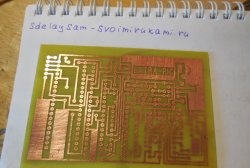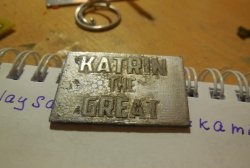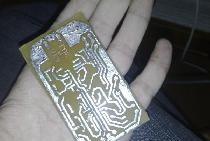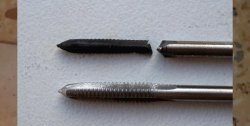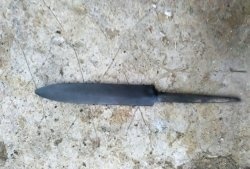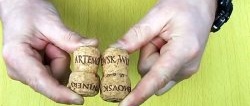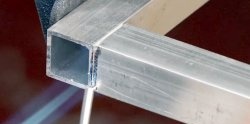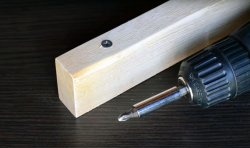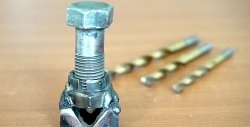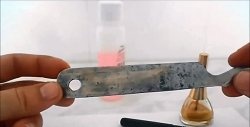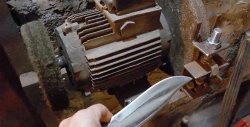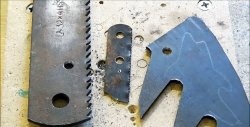How to simply etch an inscription on a blade
If you want to decorate the knife blade yourself with an inscription, pattern or small design, it is best to do this using the electrochemical method. It gives a greater guarantee of obtaining the desired result than mechanical engraving by an inexperienced master. Let's consider a method of controlled electrochemical etching of a blade, which will reveal all the details of the planned inscription.
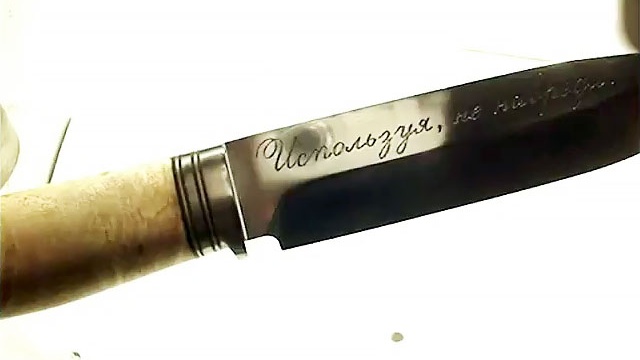
Before etching, the knife must be prepared. If a handle is already installed on it, then it is better to wrap it with masking tape or cling film. After this, the blade is degreased with a solvent.
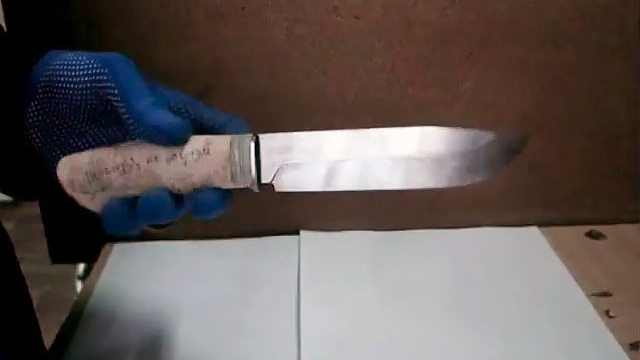
Next, the blade is painted over with a thin layer of primer and set aside to dry for 15-20 minutes. Then a second layer is applied to it and final drying is performed for at least 2-3 hours.
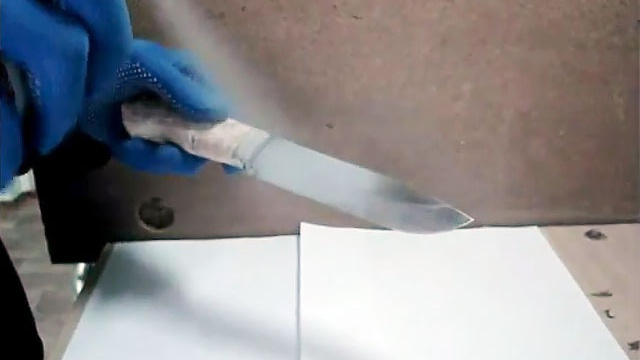
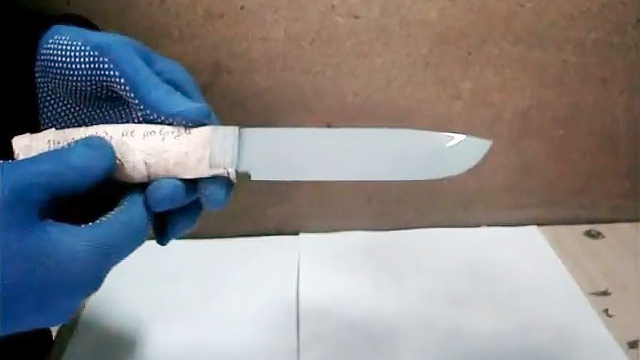
The necessary inscription is made on the blade using a dry primer using a soft pencil.
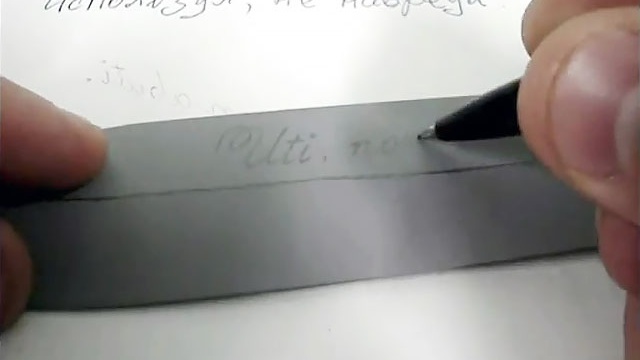
Then, using a needle or pin, you need to scratch it to bare metal, removing the pencil mark and the layer of primer located underneath it.
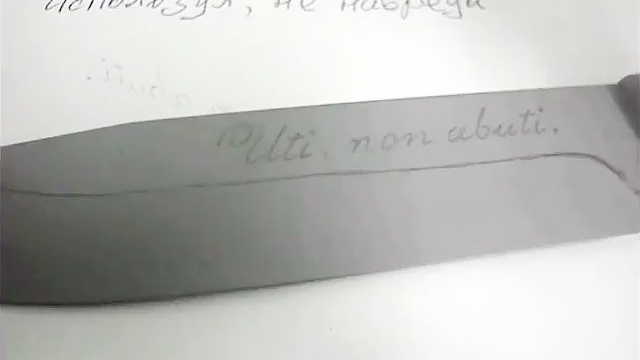
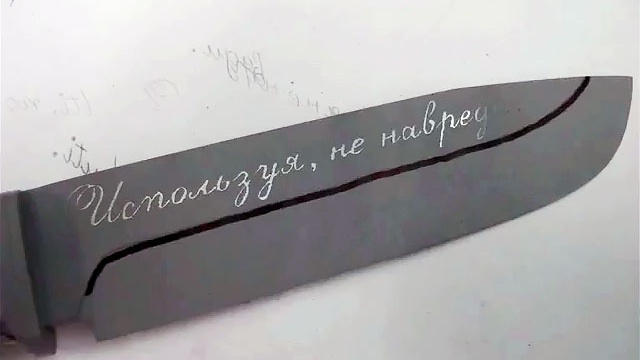
This is a very important moment, at which it is better not to rush. It is important not to damage the primer on other surfaces not intended for engraving. You also need to remove the primer in a small area closer to the cutting edge for further connection of the wire.
Next, you need to prepare 100-200 ml of table salt solution. To do this, salt is added to the water to such a concentration until it stops dissolving.
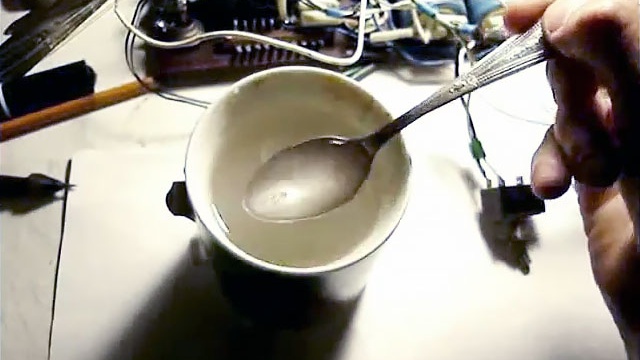
Then the walls around the inscription on the blade are made from ordinary plasticine to create a galvanic bath.
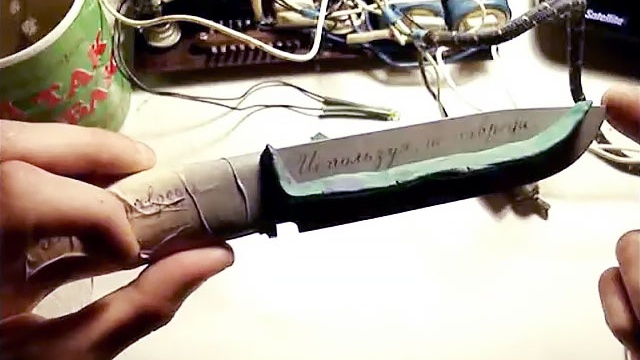
The positive wire from the power source is connected to the cleaned area on the blade. After this, the plasticine bath is filled with saline solution to a height of 3-4 mm.
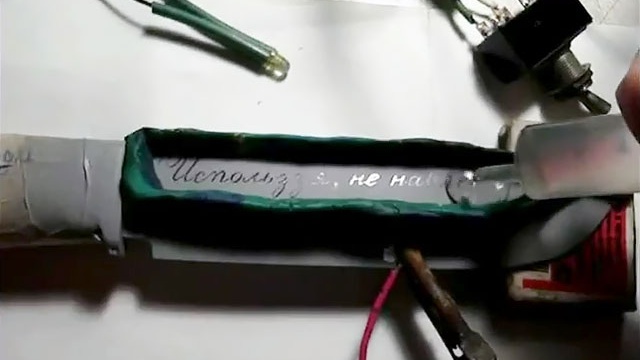
Then etching is performed with an electrode with a connected negative cable. You need to move it along the surface of the solution opposite the scratched letters.
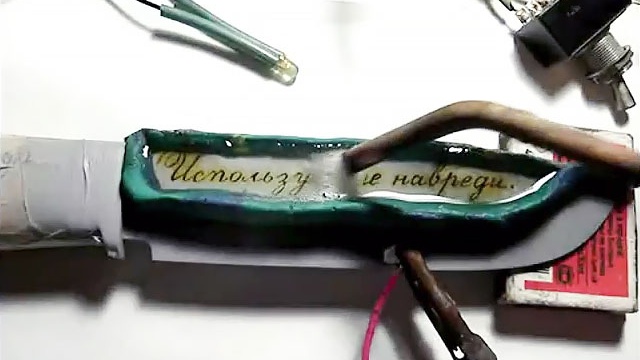
Metal is etched faster in close proximity to the electrode. In this way, you can visually control that the engraving depth is the same everywhere and, if necessary, linger in certain areas.
When etching, gas is released, which is undesirable to inhale, so it is better to work outside or under a hood. The duration of etching depends on the technical parameters of the electricity source. On car battery chargers and transformers, the engraving appears before your eyes, but if you use a phone charger, it will take hours.
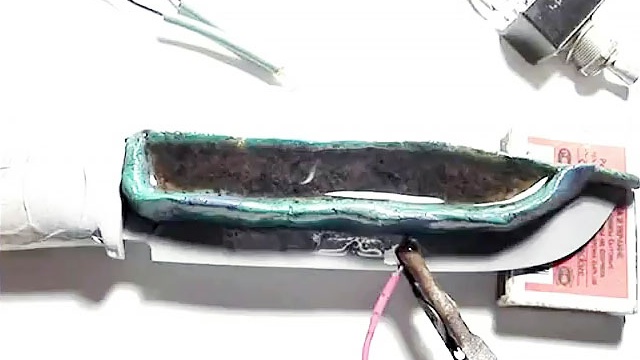
As the etching progresses, the knife will heat up, the solution will turn brown and a thick precipitate will appear. If necessary, the fluid can be changed to ensure good visibility of the blade surface. Upon completion of work, the knife is washed from the primer with a solvent.To reveal the beauty of the inscription, it is better to polish the blade slightly.
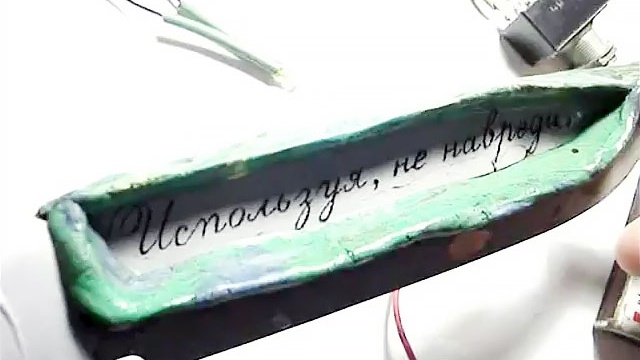

This etching method is more accurate compared to completely immersing the knife in a bath. It eliminates the possibility of getting defective, since the reaction involves a minimal area of the blade. The entire process is controlled visually, so if etching of unnecessary surfaces begins, it can be stopped in time to touch up the bare area before the metal is corroded.
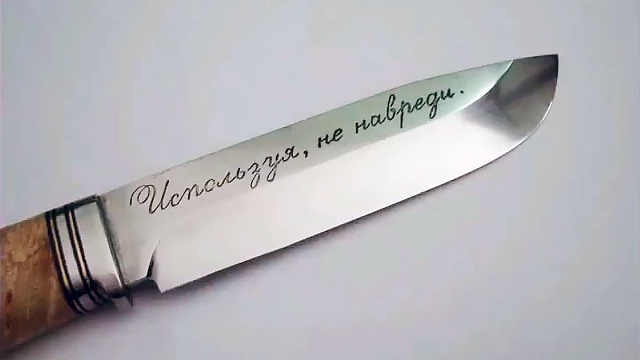
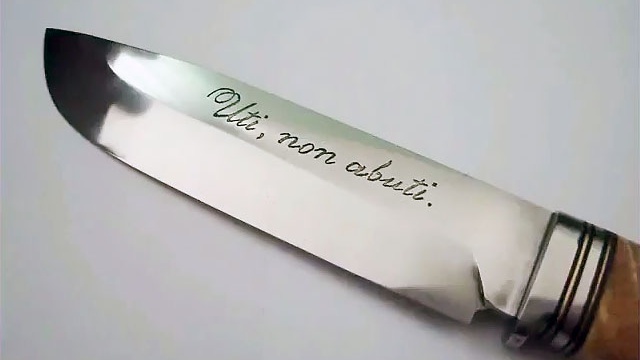
[media=https://www.youtube.com/watch?v=1lPyzHjIHQU]

Materials and tools:
- solvent 647;
- any aerosol primer;
- soft lead pencil;
- needle or pin;
- table salt solution;
- etching device (transformer, battery or charger);
- children's plasticine.
Controlled etching of the inscription on the blade
Before etching, the knife must be prepared. If a handle is already installed on it, then it is better to wrap it with masking tape or cling film. After this, the blade is degreased with a solvent.

Next, the blade is painted over with a thin layer of primer and set aside to dry for 15-20 minutes. Then a second layer is applied to it and final drying is performed for at least 2-3 hours.


The necessary inscription is made on the blade using a dry primer using a soft pencil.

Then, using a needle or pin, you need to scratch it to bare metal, removing the pencil mark and the layer of primer located underneath it.


This is a very important moment, at which it is better not to rush. It is important not to damage the primer on other surfaces not intended for engraving. You also need to remove the primer in a small area closer to the cutting edge for further connection of the wire.
Next, you need to prepare 100-200 ml of table salt solution. To do this, salt is added to the water to such a concentration until it stops dissolving.

Then the walls around the inscription on the blade are made from ordinary plasticine to create a galvanic bath.

The positive wire from the power source is connected to the cleaned area on the blade. After this, the plasticine bath is filled with saline solution to a height of 3-4 mm.

Then etching is performed with an electrode with a connected negative cable. You need to move it along the surface of the solution opposite the scratched letters.

Metal is etched faster in close proximity to the electrode. In this way, you can visually control that the engraving depth is the same everywhere and, if necessary, linger in certain areas.
When etching, gas is released, which is undesirable to inhale, so it is better to work outside or under a hood. The duration of etching depends on the technical parameters of the electricity source. On car battery chargers and transformers, the engraving appears before your eyes, but if you use a phone charger, it will take hours.

As the etching progresses, the knife will heat up, the solution will turn brown and a thick precipitate will appear. If necessary, the fluid can be changed to ensure good visibility of the blade surface. Upon completion of work, the knife is washed from the primer with a solvent.To reveal the beauty of the inscription, it is better to polish the blade slightly.


This etching method is more accurate compared to completely immersing the knife in a bath. It eliminates the possibility of getting defective, since the reaction involves a minimal area of the blade. The entire process is controlled visually, so if etching of unnecessary surfaces begins, it can be stopped in time to touch up the bare area before the metal is corroded.


Watch the video
[media=https://www.youtube.com/watch?v=1lPyzHjIHQU]
Similar master classes
Particularly interesting
Comments (1)

